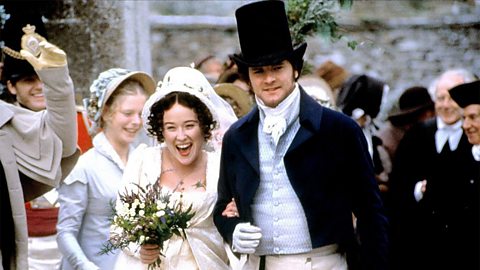Key points
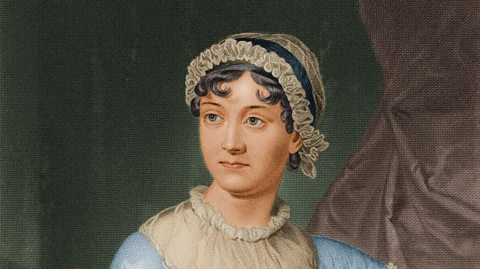
Pride and Prejudice is a proseThe ordinary language used in speaking or writing. novel in the literary fictionFiction writing that has an emphasis on character, style, and theme. genre.
The story is told in a linear way, which means the chapters follow on from each other in chronologicalEvents described or shown in the order in which they happened. order.
Jane Austen uses a third-person omniscientA perspective using an unnamed narrator who can tell the reader about the thoughts and feelings of every character. narrator to describe events and characters, and free indirect speechWhen a narrator uses the style and voice of a character to present the character’s inner thoughts and feelings. to focus on Elizabeth’s thoughts and feelings.
The language in the novel reflects its 19th century context and the way in which upper-class people spoke.


Remember
In your exam response, it is important to talk about the effects of language and structural techniques, rather than just identifying them.
Context

Pride and Prejudice is a prose novel which reflects the lives of upper-class English people living in the Georgian era.
Both the novel and its author, Jane Austen, have become popular and studied by many people since it was first published.
This means that Pride and Prejudice is now often categorised in the genre of literary fiction.
However, in the Georgian era it would have been thought of as a romanceIn this context, a novel which has a main focus on the romantic relationship between two people, usually with a happy ending. or satireIn this context, a novel that uses humour and exaggeration to make fun of social rules and behaviour..

The Georgian romance
Jane Austen was one of the first writers of her time to focus on female protagonistsThe main characters. and their lives.
In the upper classes that Austen was writing about, women’s concerns often centred around love and marriage, leading to the label of ‘romance novel’.
Language
To a modern reader, the language used by Austen can seem old-fashioned. Austen uses words which would have been more familiar in the 19th century. She is also depicting the formal language used by the upper classes.
Austen is also writing to entertain and to create a vivid world for her reader, so her language is further embellishedAdded extra details or features to make something more attractive or interesting. – just like in the most dramatic speeches of a modern-day film or TV show.
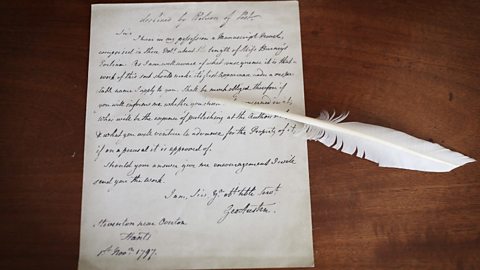
Form
Satire
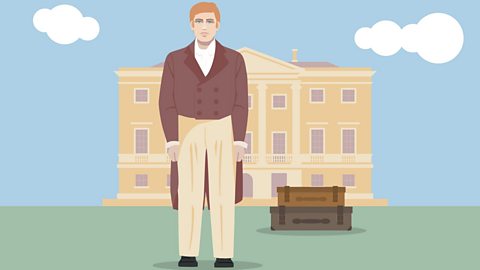
Pride and Prejudice can be described as a satireIn this context, a novel that uses humour and exaggeration to make fun of social rules and behaviour. because Austen draws attention to aspects of upper-class society that she believes are wrong or ridiculous. She does this in a humorous way, so her readers are sharing the joke with her. ironyPresenting an idea in a way that is interesting or strange because of being very different from what you would expect. is used throughout to achieve this, most famously in the novel’s opening line:
It is a truth universally acknowledged, that a single man in possession of a good fortune, must be in want of a wife.
Not only do the events of the novel contradict this statement – as it is the women looking for husbands, rather than the other way around – but it also conciselyExpressed in a short and clear way. satirises the obsession that the Georgian upper classes had with marriage, class and wealth.

Perspective
Another way in which Austen can control how her ideas are presented is through the perspective she has chosen to use.
In Pride and Prejudice, she uses a third-person omniscientA perspective using an unnamed narrator who can tell the reader about the thoughts and feelings of every character. narrator. The narrator can therefore comment on all characters and events.
As a satireIn this context, a novel that uses humour and exaggeration to make fun of social rules and behaviour., the tone of the narrator can often be sarcastic or critical, though there are occasions when the narrator is very empatheticShowing the ability to understand and share the feelings of others., especially towards Jane and Elizabeth.
free indirect speechWhen a narrator uses the style and voice of a character to present the character’s inner thoughts and feelings. is used by Austen when it is helpful to have a clear idea about what a character is thinking or feeling. This technique combines the author’s perspective with the character’s emotions. Austen mostly uses it in Pride and Prejudice to share what is happening in Elizabeth’s mind. An example is when Elizabeth unexpectedly meets Darcy at Pemberley:
Oh! Why did she come? Or, why did he thus come a day before he was expected? Had they been only ten minutes sooner, they should have been beyond the reach of his discrimination.
Here, Elizabeth is not speaking, but the exclamation and question marks suggest that these are her inner thoughts and feelings instead of the words of a more distant, calm narrator.
Epistolary form
epistolaryA story told through letters or other documents. novels are structured from letters between characters. Academics believe that Jane Austen’s first draft of Pride and Prejudice, under the original name of First Impressions, was written entirely in the epistolary form.
In the version published in 1813, there are a total of 28 letters that support the progression of the plot. Letters are used as part of the novel’s structure to reveal additional information and create different character perspectives, and are eagerly read by other characters. Austen makes her intentions about this clear in Volume 3, Chapter 6 when she says:
The arrival of letters was the first grand object of every morning’s impatience.
Austen includes letters at points when characters are in different locations or to create a dramatic and unexpected revelation, such as the news of Lydia’s marriage.
Slideshow: context

Image caption, The word ‘epistolary’ comes from the word ‘epistle’, which is Greek for ‘letter’. It refers to any story told through letters, although sometimes other documents like diary entries can be included too.

Image caption, Epistolary novels first became popular in the 18th century. Experimenting with the epistolary form allowed writers to shift perspectives, use a range of characters’ voices and styles, and create intrigue for the reader by presenting letters out of sequence or not including much description of the setting of the novel.

Image caption, Other well-known epistolary novels of the 19th century that came after Austen’s work are Frankenstein by Mary Shelley and Dracula by Bram Stoker. More modern examples are Stephen Chbosky’s 'The Perks of Being a Wallflower' and 'The White Tiger' by Aravind Adiga.
1 of 3
Structure
The structure of the narrative in Pride and Prejudice is linear In this example, a story told in the order in which events happen., which means that events occur in chronological order. There are some small jumps forward in time between chapters, but there are no significant changes to the plot or characters in these gaps.
Linear narrative
There are several sub-plotsMinor stories that run parallel to the main plot of a novel. in the novel. Most of these are brought together by coincidence – for example, the Bennet sisters meeting Wickham on the street and later finding out about his connection to Darcy. They are also sometimes linked by revealing a familial connection between two characters, such as Mr Collins and Mr Bennet.
All the narratives join together in some way and enhance each other and are resolved by the end of the novel. This variety of events is entertaining and invites the reader to try and guess at the connections and overlaps as they are reading.
Volumes

Pride and Prejudice was originally published in three volumesIn this context, single physical books that make up the parts of one longer novel., with the chapter numbers restarting each time.
This was common in the 19th century and meant that readers could buy individual volumes cheaply and build anticipation for the next volume.
Structurally, each volume develops the narrative in a traditional way that mirrors a three-act play, with the first volume providing expositionThe introduction or beginning of a story that reveals important background information., the second describing rising actionThe main events in a story, building up to the point of greatest interest., and the third volume giving readers a clear resolutionThe conclusion of the story’s plot after any conflict has been resolved..

Question
What other examples of structural features might you be able to look for in this novel?
You could look for, and comment on the effects of, the following features:
| Structural feature | Effect |
|---|---|
| Flash forwards | The jumps in time between some chapters showing how the seasons change and the social calendar continues in Meryton. |
| dramatic ironyWhen the reader understands more about a situation than some of the characters do. | The reader’s awareness of Darcy’s feelings for Elizabeth when he approaches her at the piano. |
| Patterns or repetition | The many physical journeys in the novel symbolising the emotional journeys taken by several characters. |
| Shifts in time, setting or focus | The changes from Longbourn to London and Kent creating different opportunities for developing plot and character. |
| foreshadowTo hint at a future event. | Elizabeth telling Mr Collins that she is not the type of woman to say yes to a second marriage proposal after saying no to the first one – which is what she will eventually do with Darcy. |
Language
Dialogue
There is much more dialogue in Pride and Prejudice than readers of modern novels may be used to. Some chapters are almost entirely made up of dialogue, so that these chapters seem like scenes from a play.
Austen does this to add realism to the conversations between characters, making the reader feel like they are immersedCompletely involved. in the world of the story. It also means that, even though we experience the story from Elizabeth’s perspective, we can make our own judgements about the meaning of what each character says.
Speech patterns
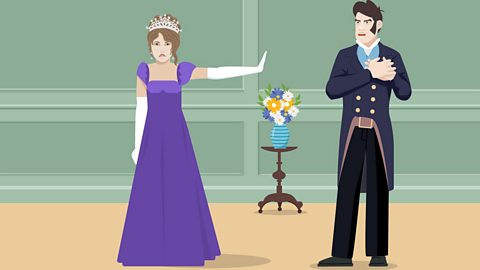
Austen ensures that each character has their own patterns of speech, different to other characters in the novel. This is necessary to be able to tell the differences between them in large sections of dialogue in the text – especially as, in the Georgian era, chapters from novels would be usually read aloud by one person to the rest of the family.
For example, Mr Bennet uses short, blunt sentences when speaking to his wife – and Mrs Bennet is hyperbolicDeliberately exaggerated. and uses frequent questions in return. Characters like Darcy and Elizabeth often use rhetoricA set of techniques used in spoken language to persuade or argue., as their conversations are frequently about persuading or arguing.

Imagery
The novel also has many examples of imagery, mostly metaphorWords or phrases that describe something by saying it is something else. and similesComparisons of two things, using the words ‘like’ or ‘as’. in both dialogue and description.
In addition, descriptions of body language and physical movements, like a character turning or looking away, are used to emphasise the words being spoken.
Analysing language and structure
Activity
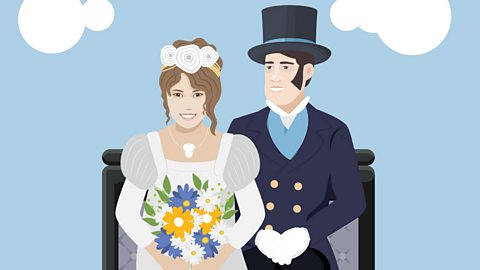
Look at this moment in the novel when Lady Catherine de Bourgh realises she has been unsuccessful in her attempt to discourage Elizabeth from marrying Darcy. Lady Catherine is speaking first.
“You have no regard, then, for the honour and credit of my nephew! Unfeeling, selfish girl! Do you not consider that a connection with you must disgrace him in the eyes of everybody?”
“Lady Catherine, I have nothing further to say. You know my sentiments.”
“You are then resolved to have him?”
“I have said no such thing. I am only resolved to act in that manner, which will, in my own opinion, constitute my happiness, without reference to you, or to any person so wholly unconnected with me.”
“It is well. You refuse, then, to oblige me. You refuse to obey the claims of duty, honour, and gratitude. You are determined to ruin him in the opinion of all his friends, and make him the contempt of the world.”

Quiz
Test your knowledge of the language, structure and form in Pride and Prejudice by taking this multiple-choice quiz.
More on Pride and Prejudice
Find out more by working through a topic
- count1 of 5
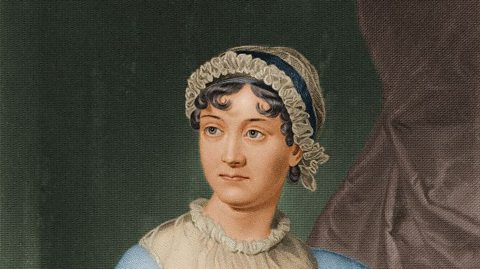
- count2 of 5
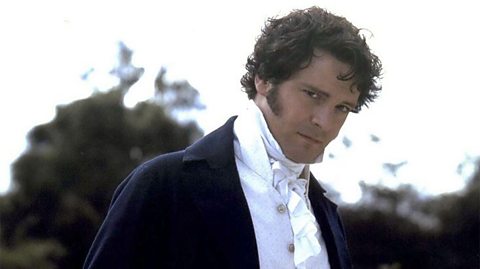
- count3 of 5
